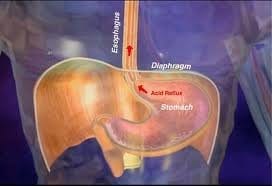 By Brenda Cannon Henley
By Brenda Cannon Henley
Readers may be wondering why I would presume to say that last week’s and this week’s columns are perhaps the most important I have ever personally written. I believe that if only one person responds to the information I am sharing, and his or her life is spared, then these efforts will be more than worthwhile. By the way, men are three times more expected to get esophageal cancer than women, so share with the male members of your household, neighbors, coaches, church friends, and coworkers.
My husband, Ted, is an all American kind of guy. An old Texas lawman, if you will. He loves the outdoors, fishing, hiking, traveling, and working hard. He is in the battle of his life and we didn’t even know it. Since his recent diagnosis, we have studied, researched, met with doctors, and undergone treatments. We have also become vocal about this cancer that delights in sneaking up on a person and hitting them in the gut, or the chest, or in some cases, both. After we learned Ted’s diagnosis of Stage 4 esophageal and stomach cancer with lymph node involvement, I started asking questions and reading. I found I wanted to know how this horrible thing could happen to him on my watch. The cancer started in the area where the esophagus joins the stomach, but we had no symptoms until the night he choked while eating a late dinner after working hard all day.
However, he had been on prescription medication for many years for acid reflux or GERD, but never worried about it because the medicine he took make him feel better and the pain go away. His father had it before him and his son has it now. At least three of the members of our medical team believe that his Her2 cancer started as a direct result of this acid pooling at the juncture of the esophagus and stomach, and that over the years, the medicine prescribed to him, added to the problem. One of the doctors quoted a soon-to-be-released reputable study that is showing a high upsurge of esophageal cancer linked to acid reflux and the medicine prescribed for the condition. He quoted that the statistics prove that the highest rise is in white males, over 40, affluent enough to have eaten what they want and as much of it as they want for years, and having been prescribed medication for a number of years for the medical condition.
 Ted’s esophagus and stomach had fused together with the unrestricted growth of this adenocarcinoma, (meaning aggressive and invasive) and by the time we discovered it, the tumor had grown outside both organs and was already in the lymph nodes where it could travel to other parts of his body. How could we not have known? He had been under the watchful eye of a wonderful primary care physician and a specialist for the Afib, but yet, the tumor left unchecked was taking over his body. Our prognosis was fairly dim and we had few options. All members of the medical team assured me that the choking is usually the only and first symptom patients had. Doctors would not have checked for it unless the patient had expressly asked for a certain test or tests.
Ted’s esophagus and stomach had fused together with the unrestricted growth of this adenocarcinoma, (meaning aggressive and invasive) and by the time we discovered it, the tumor had grown outside both organs and was already in the lymph nodes where it could travel to other parts of his body. How could we not have known? He had been under the watchful eye of a wonderful primary care physician and a specialist for the Afib, but yet, the tumor left unchecked was taking over his body. Our prognosis was fairly dim and we had few options. All members of the medical team assured me that the choking is usually the only and first symptom patients had. Doctors would not have checked for it unless the patient had expressly asked for a certain test or tests.
If you or someone you love has acid reflux, any pain in the stomach or chest area that is not explained, or feels tired and irritable, take the time to go and get one of the many tests done to determine if you, too, have a battle going on inside your body. Since our discovery, several dear friends have gone to their physicians and asked for the scope or scan that can save their life. In most cases, the patient must ask for these tests or at least bring it to their physician’s attention.
Your physician might recommend a barium swallow, which is usually one of the first tests if there is a suspicion of something amiss. There may be trouble in swallowing, a sharp heartburn after eating, or acid reflux, which is now being so closely examined. Or, he or she may order one of several imaging tests using magnetic fields, sound waves, or radioactive substances to create pictures of the inside of your body. Imaging tests might be done for a number of reasons, which your physician will gladly explain to you. They can help to find suspicious areas that might be cancer, learn if and how far the cancer has spread, help the medical team determine if the treatment has been effective, and to look for possible signs of cancer coming back after treatment has been completed.
You might be offered a Computed Tomography or CT or CAT scan where cross-sections of your body can be examined carefully. Perhaps your doctor will want a Magnetic Resonance Imaging or MRI scan where soft tissue images can be checked. And, in some cases, they might want a Positron Emission Tomography or PET scan, where a form of radioactive sugar (fluorodeoxyglucose) is injected into the blood, along with a special camera and light to trace the images. You could also get an endoscopy, upper endoscopy, or an endoscopic ultrasound where the sound waves are transmitted by computer to printable images.
Find a medical team you trust. Work with them to determine if you have any condition that should be watched. Do your homework. Read, research, and ask questions until you get answers. And, for Heaven’s sake, don’t die simply because you did not take the time to have a complete physical and any testing you may need. I am not a prophet of doom or a naysayer, but this snuck up on us and hit us broadside, and the great tragedy is that it was almost too late when we knew it had hit. Make that appointment today for yourself or someone you love.
Brenda Cannon Henley can be reached at (409) 781-8788 or at [email protected].
Contact Brenda Cannon Henley:
[contact-form-7 404 "Not Found"]

 Posted in
Posted in 























